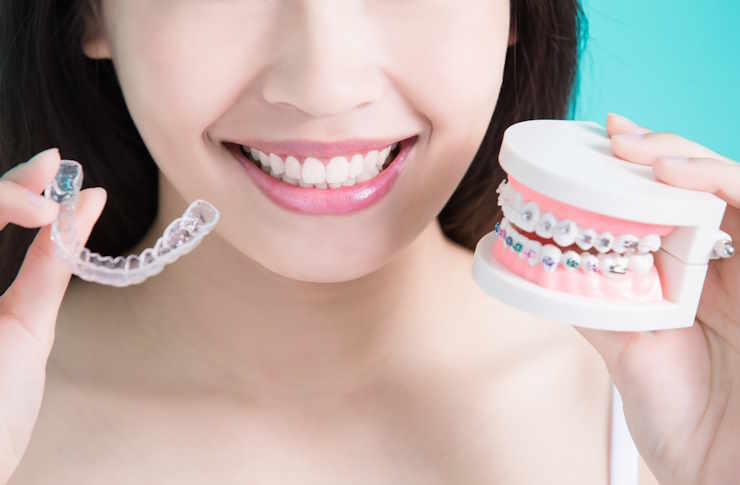Screwless Dental Implants: What They Are and How Much They Cost
Screwless dental implants are a modern alternative to traditional methods, designed to improve comfort and reduce healing time. Learn what makes them different, what factors influence costs, and whether they are the right choice for you. Unlike conventional screw-based systems, screwless implants use advanced connection technology that allows for easier placement and fewer complications, which can also affect overall treatment pricing.

Dental implants have revolutionized tooth replacement, offering patients durable and natural-looking solutions for missing teeth. While traditional dental implants typically involve titanium screws surgically placed into the jawbone, screwless alternatives have emerged as an innovative option for certain patients. This article explores what screwless dental implants are, their associated costs, benefits, limitations, and considerations for making an informed decision about this dental restoration option.
What Are Screwless Dental Implants?
Screwless dental implants, as the name suggests, are implant systems that don’t rely on traditional screws to secure the prosthetic tooth to the implant base. Instead, these systems use alternative attachment methods such as friction-fit connections, snap-on mechanisms, or magnetic attachments to hold the dental crown or prosthetic in place.
The most common type of screwless implant is the press-fit or friction-fit implant, which uses precise engineering to create a secure connection between the implant body and the abutment (the connector piece that holds the crown). Another variation is the one-piece implant, where the implant body and abutment are manufactured as a single unit, eliminating the need for connecting screws.
Screwless designs often aim to address some challenges associated with traditional screw-retained implants, such as screw loosening, potential fractures, or aesthetic concerns where screw access holes might be visible.
How Much Do Screwless Implants Cost?
The cost of screwless dental implants varies significantly based on several factors including geographic location, dentist expertise, materials used, and the complexity of the individual case. Generally, screwless dental implants may cost between £1,800 and £4,000 per tooth in the UK, though complete full-mouth restorations using screwless systems can range from £15,000 to £30,000 or more.
Several factors influence the final price:
- The specific screwless system being used (brand and technology)
- Whether bone grafting or sinus lifts are required
- The number of implants needed
- The material and type of final restoration
- Additional procedures such as extractions or tissue grafting
| Screwless Implant Type | Average UK Cost (per implant) | Notable Features | |————————|—————————–|——————-| | Press-fit/Friction-fit | £2,000-£3,500 | No visible screw access holes, improved aesthetics | | One-piece systems | £1,800-£2,800 | Simplified design, potentially faster healing | | Magnetic attachment systems | £2,500-£4,000 | Easy removal for cleaning, good for overdentures | | Snap-on attachment systems | £2,200-£3,800 | Secure connection, popular for implant-supported dentures |
Prices, rates, or cost estimates mentioned in this article are based on the latest available information but may change over time. Independent research is advised before making financial decisions.
It’s worth noting that while the initial cost of screwless implants might be higher than traditional options in some cases, they may offer long-term benefits that could justify the investment, such as simplified maintenance or aesthetic advantages.
Benefits and Limitations to Consider
Screwless dental implants offer several potential advantages over traditional screw-retained systems:
Benefits:
- Improved aesthetics with no visible screw access holes in the crown
- Potentially reduced risk of mechanical complications like screw loosening
- Simplified restoration process in some cases
- Better stress distribution across the implant and surrounding bone
- Easier maintenance for certain designs
- Reduced chairside time for placement and restoration
However, these systems also come with limitations:
Limitations:
- Not suitable for all clinical situations or jaw conditions
- May require more precise placement and planning
- Some designs might be more difficult to repair or modify if problems occur
- Limited long-term clinical data compared to traditional screw-retained implants
- Potentially higher initial cost for certain systems
- Not all dental professionals have extensive experience with all screwless systems
The suitability of screwless implants depends largely on individual patient factors including bone quality, bite forces, aesthetic requirements, and long-term oral health goals.
Making the Right Decision for Your Smile
Choosing between screwless and traditional dental implants requires careful consideration of several factors. The decision should be made in consultation with a qualified implant dentist who can evaluate your specific needs.
Key considerations include:
-
Anatomical suitability: Your jaw structure, bone density, and the location of the missing tooth all influence which implant system will work best.
-
Aesthetic requirements: If the implant is in a highly visible area, the absence of screw access holes in screwless systems may provide superior cosmetic results.
-
Long-term maintenance: Consider how easily the restoration can be maintained, repaired, or replaced if needed in the future.
-
Budget considerations: While cost shouldn’t be the only factor, understanding the financial implications of different systems is important for planning purposes.
-
Dentist expertise: Choose a dental professional with specific experience in the type of implant system you’re considering.
Many patients find it helpful to request before-and-after photos of similar cases and to discuss the pros and cons of each option with their dental provider. Second opinions can also be valuable when making such a significant decision about your oral health.
Ultimately, the “right” choice depends on your individual circumstances, preferences, and dental health needs. Modern dental implant technology—whether screwless or traditional—can provide excellent, long-lasting results when properly planned and executed by skilled professionals.
This article is for informational purposes only and should not be considered medical advice. Please consult a qualified healthcare professional for personalized guidance and treatment.



